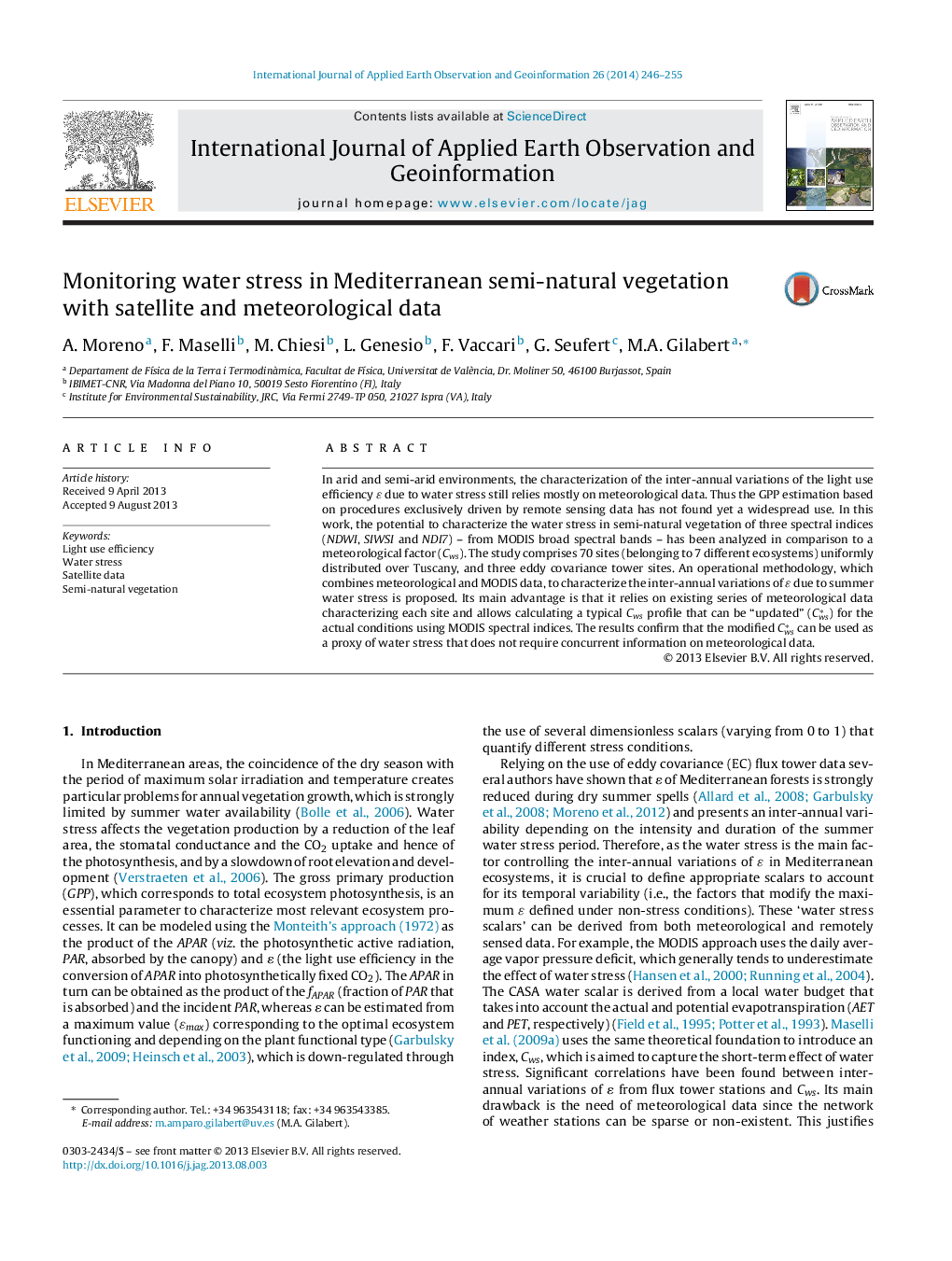| Article ID | Journal | Published Year | Pages | File Type |
|---|---|---|---|---|
| 6349115 | International Journal of Applied Earth Observation and Geoinformation | 2014 | 10 Pages |
â¢The objective is to characterize the inter-annual variation of É due to water stress.â¢MODIS spectral indices and the Cws (from meteorological data) have been analyzed.â¢An operational methodology, which combines meteorological and MODIS data, is proposed.â¢It is based on a typical Cws that is updated for actual conditions using MODIS data.â¢The results confirm that the modified Cws can be used as a proxy of water stress.
In arid and semi-arid environments, the characterization of the inter-annual variations of the light use efficiency É due to water stress still relies mostly on meteorological data. Thus the GPP estimation based on procedures exclusively driven by remote sensing data has not found yet a widespread use. In this work, the potential to characterize the water stress in semi-natural vegetation of three spectral indices (NDWI, SIWSI and NDI7) - from MODIS broad spectral bands - has been analyzed in comparison to a meteorological factor (Cws). The study comprises 70 sites (belonging to 7 different ecosystems) uniformly distributed over Tuscany, and three eddy covariance tower sites. An operational methodology, which combines meteorological and MODIS data, to characterize the inter-annual variations of É due to summer water stress is proposed. Its main advantage is that it relies on existing series of meteorological data characterizing each site and allows calculating a typical Cws profile that can be “updated” (Cws*) for the actual conditions using MODIS spectral indices. The results confirm that the modified Cws* can be used as a proxy of water stress that does not require concurrent information on meteorological data.
